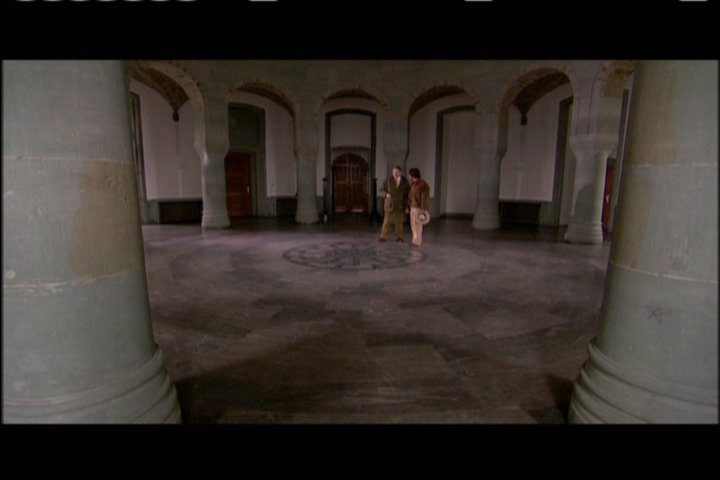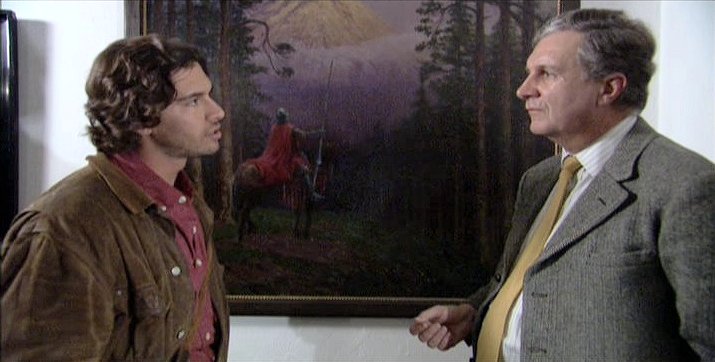The Holy Grail
Josh is on a journey to find the Holy Grail, the supposed cup or chalice which Jesus drank from at the Last Supper. The journey starts in Languedoc region of southern France where Josh looks into reports that the grail was brought there by Midevil knights.
Josh's Journal
created by diggingforthetruth.net 2008

Journal taken from The History Channel DFT site. Photos taken from The History Channel DFT site and video.
After playing knight himself, Josh heads to Jerusalem to investigate the grail being taken from there for safe keeping by knights. Next, Josh returns to France to follow information about the possible connection of the Knights Templar and the Cathars of France. Then, he heads to Germany and to Wewelsburg castle to investigate information about the Nazi's and their quest for the grail during WWII.
The Holy Grail
The Holy Grail: "First of all, yes, I have read The Da Vinci Code—and I thought it was a lot of fun and fascinating to consider the bloodline significance of the Grail. But the idea of a chalice of some sort still pervades modern conceptions of the Holy Grail and this is where my 'Digging' begins. Why a chalice? Where did that belief come from? If Jesus Christ was having the Last Supper during the time of Passover, how likely is it that his wine cup (a very Jewish symbol, especially during the Passover dinner) would have been kept and then guarded for over 2000 years? What would give that wine cup special powers, like eternal life or divine wisdom? Lots of questions."
Southern France: "The Languedoc region of Southern France seems as good a place as any to begin the quest, since this is where so many Grail stories originated. The connection between The Holy Grail and the Knights of the Middle Ages intrigues me—and well beyond Monty Python. Why would the people in this region travel so far—and kill so many people—for a holy object? Of course, religion and holy wars have often been the driving force behind invasions and attacks (not to mention Inquisitions) but could a chalice motivate such a movement? The chalice must have been given special meaning within the culture, and this is why the Langedoc is fascinating. This is where the cultural significance of the Grail was apparently born in the late 12th century."
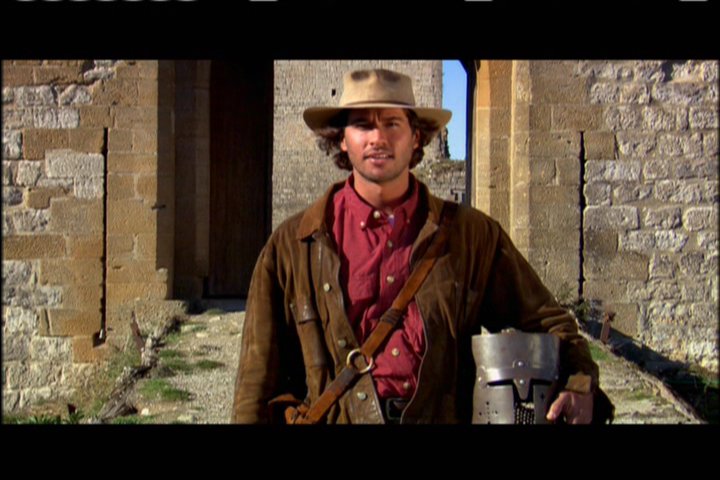
Wearing Armor: "I kid you not—the chain mail shirt alone weighed around 35 pounds! With the leg armor, chest armor, gloves, helmet and sword (heavy!) a knight must have been carrying over 50 pounds of metal. And then he had to fight!

I think this is why there were so many codes of chivalry, because you really had to construct guidelines to make the fighting possible. Otherwise, people would just kill you when you were collapsed on the ground in exhaustion. I can also see why it would be necessary to have custom fitting armor—I had bruises and cuts for a week after wearing mine."

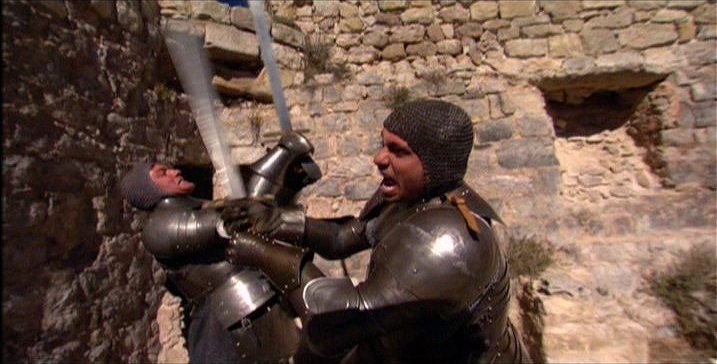
Jerusalem: "Looking for the Grail in Jerusalem makes some sense, since we know that at some point it must have been there. What I find most fascinating about historical quests for the Grail is the perseverance of groups like the Knights Templar. To this day, there are still people searching for holy relics beneath the stone walls of the Temple Mount and within the Old City. The Ark and The Holy Grail are only two that I've explored, but the possibilities for hiding places are truly endless. So I decide to make a leap of faith and say 'If the Grail was found, where would it be taken?' and this leads me to Akko."
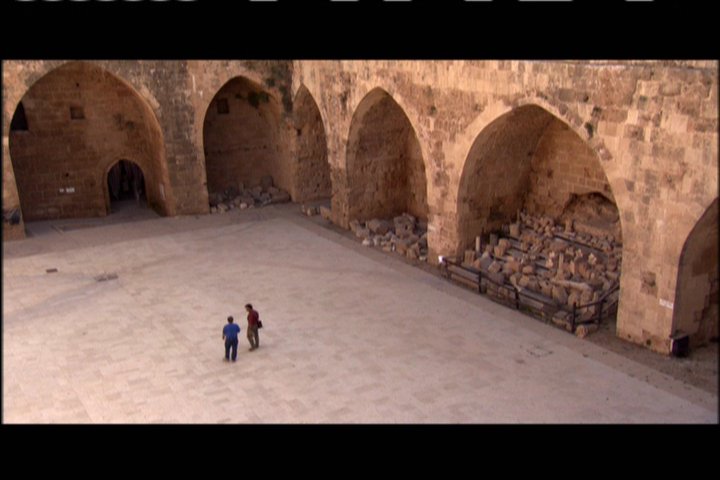
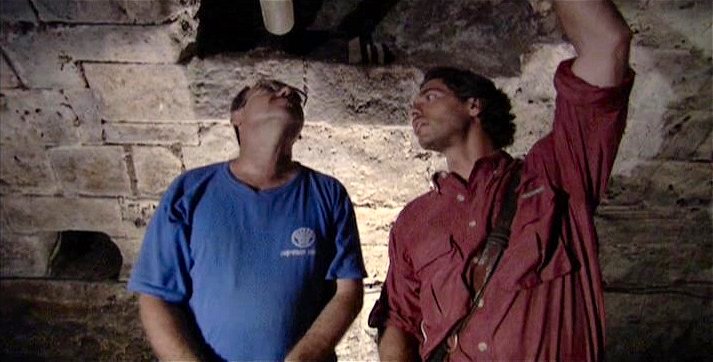
Akko: "Akko, or Acre, is one of those special places where archeology is making exciting finds regularly—only 1 percent of the Crusader city has been excavated! Walking through the dining halls, I'm amazed at how grand the lifestyle of the Templars, Hospitalers, and other Crusader orders was. These knights, who in many ways were the bankers of the Age, really put a lot of time, energy and money into the construction of this place. And that subterranean tunnel the Templars built to protect their pilgrims is gorgeous!"
Montsegur: "Back in France, and back at another castle. The connection between the Templars of Jerusalem and the Cathars of France is supported by local legend in places like Comus, France. But Mike Rudd and I spent many a cup of espresso trying to find a connection in the history books—no luck. Yet it is still believed that the Templars gave the Grail to the Cathars and the Cathars then took the Grail through the Gorge de la Frau to Montsegur Castle.
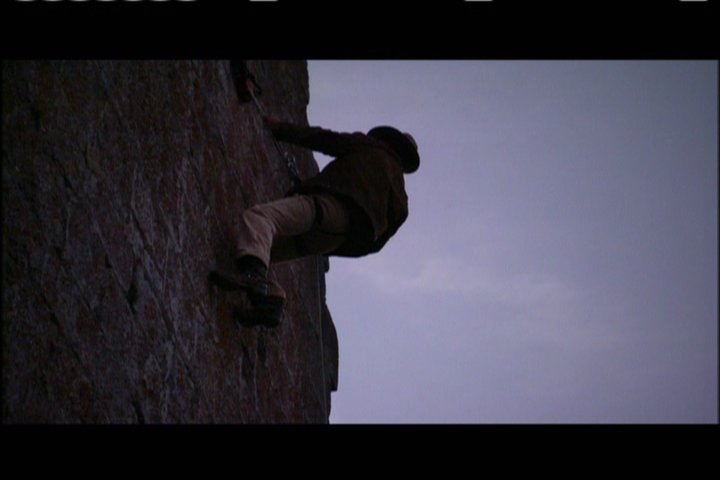
This part of the quest may be more fiction than fact, but it's still worth a trip. So Mike and I spent the day exploring Montsegur before I rappelled out the castle window and down the north face of the slope. I thought about trying one of the other cliff faces, but I don't think it would have been possible without modern climbing gear.

The route I took could be done with handmade ropes and a solid understanding of the terrain. And, apparently, this is how the Cathars succeeded to travel covertly—they would have specialists transport them from place to place, each specialist an expert in that specific neighborhood. So a few climbers and cliff dwellers could have led them down and out that valley during the night. The Grail would be small enough to carry during the descent."
The Nazis & The Grail: "Honestly, I thought that the connection between the Nazis and the Grail was pure Hollywood—shows how much I knew about this. But Heinrich Himmler and Otto Rahn were indeed conspiring to find it, and this leg of the quest was particularly fascinating.
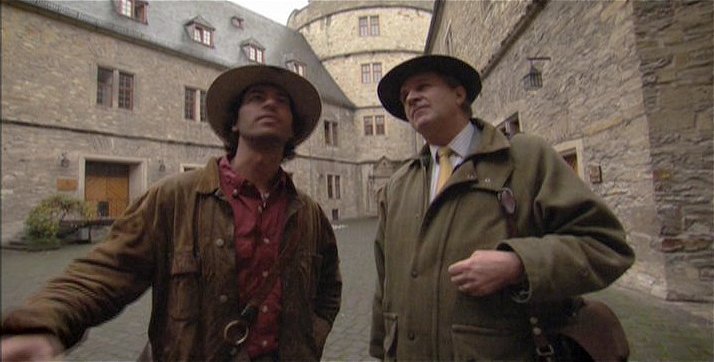
Wewelsburg castle is one of the most stifling, sobering places I've ever visited. Part of this, no doubt, is due to my own projections with the Nazi party, but Nicholas Goodrick-Clarke explained that Himmler sought to create a very formal, very serious facility to induce the proper aura of respect and sanctity in the SS training program. I have to say he succeeded!
That subterranean crypt with the swastika overhead was right out of a fraternity initiation room. And the acoustics in the room were unbelievable—if you whispered on one side of the room, I could hear you perfectly if I was standing on the other. And standing in the very center produced an intense echo effect."
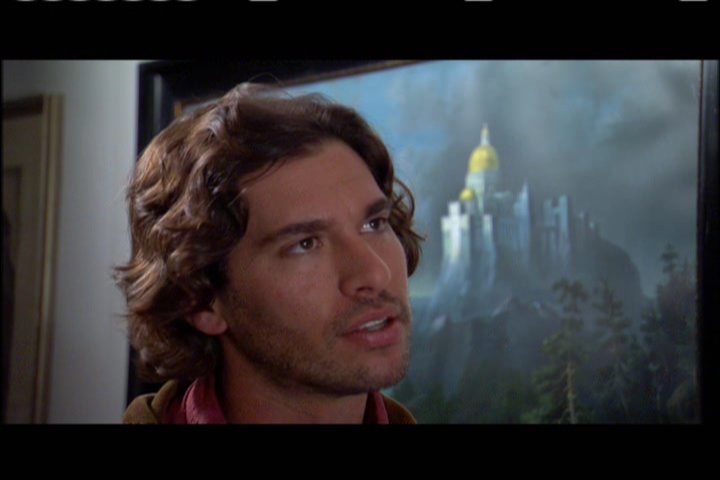
The Real Holy Grail: "The Nazis, like the thousands of people before them (and a few since them) didn't ever find the Grail. Which makes me wonder if it really did exist, if it was ever something physical to find. Richard Barber captures my thought perfectly—the "Holy Grail" is not about a physical object as much as it is the pursuit of perfection and the striving for an ideal. And maybe there is something to the holy blood theory which Holy Grail, Holy Blood and The Da Vinci Code discuss. Hard to say. But if the journey is the destination, this was a great journey."
